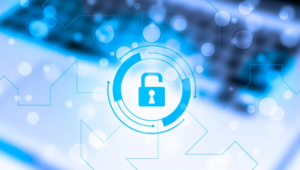In the world of cybersecurity, staying ahead of threats is crucial. That’s where STIX cybersecurity, or Structured Threat Information eXpression, comes into play. As a standardized language for describing cyber threat intelligence, STIX enables organizations to effectively share and analyze threat information.
When it comes to enhancing security measures, understanding the nature of cyber threats is key. By utilizing STIX cybersecurity professionals can streamline threat intelligence sharing, facilitating quicker responses to potential risks. With its structured format, STIX empowers defenders to make informed decisions and fortify their defenses against evolving cyber threats.
In this article, I’ll delve deeper into the significance of STIX in cybersecurity and explore how this standardized language is revolutionizing the way organizations approach threat intelligence. Stay tuned to discover how STIX is shaping the future of cybersecurity practices.
STIX Cybersecurity
What Is STIX?
 STIX cybersecurity, which stands for Structured Threat Information eXpression, is a standardized language utilized in the cybersecurity domain. It plays a crucial role in describing cyber threat intelligence in a structured manner. With STIX cybersecurity, organizations can effectively share and analyze threat information, leading to enhanced security measures. By adopting STIX, cybersecurity professionals can streamline the process of sharing threat intelligence and respond rapidly to potential risks.
STIX cybersecurity, which stands for Structured Threat Information eXpression, is a standardized language utilized in the cybersecurity domain. It plays a crucial role in describing cyber threat intelligence in a structured manner. With STIX cybersecurity, organizations can effectively share and analyze threat information, leading to enhanced security measures. By adopting STIX, cybersecurity professionals can streamline the process of sharing threat intelligence and respond rapidly to potential risks.
The key components of STIX include objects, properties, and relationships. Objects represent entities such as threat actors, malware, or vulnerabilities. Properties provide specific details about these entities, while relationships define the connections between them. STIX allows for the representation of complex cyber threat information in a standardized format, enabling defenders to make well-informed decisions. This structured approach empowers organizations to strengthen their defenses against the ever-evolving landscape of cyber threats.
The Importance of STIX in Cybersecurity
Enhancing Threat Intelligence
 In cybersecurity, STIX cybersecurity plays a crucial role in enhancing threat intelligence capabilities. It provides a standardized framework for describing and sharing cyber threat information effectively. By using STIX, security professionals can access structured data that allows for a deeper understanding of potential risks. This standardized approach enables organizations to analyze threats more efficiently and take proactive measures to mitigate them effectively. With STIX, I can enhance my threat intelligence strategies and better protect my systems against evolving cyber threats.
In cybersecurity, STIX cybersecurity plays a crucial role in enhancing threat intelligence capabilities. It provides a standardized framework for describing and sharing cyber threat information effectively. By using STIX, security professionals can access structured data that allows for a deeper understanding of potential risks. This standardized approach enables organizations to analyze threats more efficiently and take proactive measures to mitigate them effectively. With STIX, I can enhance my threat intelligence strategies and better protect my systems against evolving cyber threats.
One of the significant advantages of STIX cybersecurity is its ability to facilitate standardization across different platforms. By adopting STIX as a common language for describing cyber threats, organizations can ensure interoperability between various security tools and systems. This standardization streamlines the exchange of threat intelligence between different entities, such as security vendors, researchers, and government agencies. With STIX cybersecurity, I can integrate threat intelligence from diverse sources seamlessly, enabling me to build a more comprehensive view of potential risks and improve my overall cybersecurity posture.
Implementing STIX in Organizations
 To successfully integrate STIX within organizations, it’s crucial to assess current systems and processes to determine compatibility and identify any necessary adjustments. I recommend starting with a thorough review of existing security tools and platforms to ensure they are capable of consuming and utilizing STIX-formatted threat intelligence. This initial step is essential to guarantee seamless integration and effective utilization of STIX cybersecurity operations.
To successfully integrate STIX within organizations, it’s crucial to assess current systems and processes to determine compatibility and identify any necessary adjustments. I recommend starting with a thorough review of existing security tools and platforms to ensure they are capable of consuming and utilizing STIX-formatted threat intelligence. This initial step is essential to guarantee seamless integration and effective utilization of STIX cybersecurity operations.
Once compatibility is confirmed, organizations should consider leveraging automation tools and technologies to facilitate the integration process. Automated tools can streamline the ingestion of STIX data into existing systems, reducing manual efforts and minimizing the risk of human error. By automating the integration process, organizations can enhance their threat intelligence capabilities and improve the efficiency of their cybersecurity operations.
Challenges and Considerations
While implementing STIX can significantly enhance an organization’s cybersecurity capabilities, it’s essential to be mindful of potential challenges and considerations that may arise during the process. One common challenge is the complexity of integrating STIX with legacy systems that may not support the standard format. In such cases, organizations may need to invest in upgrading or replacing outdated systems to ensure compatibility with STIX cybersecurity.

